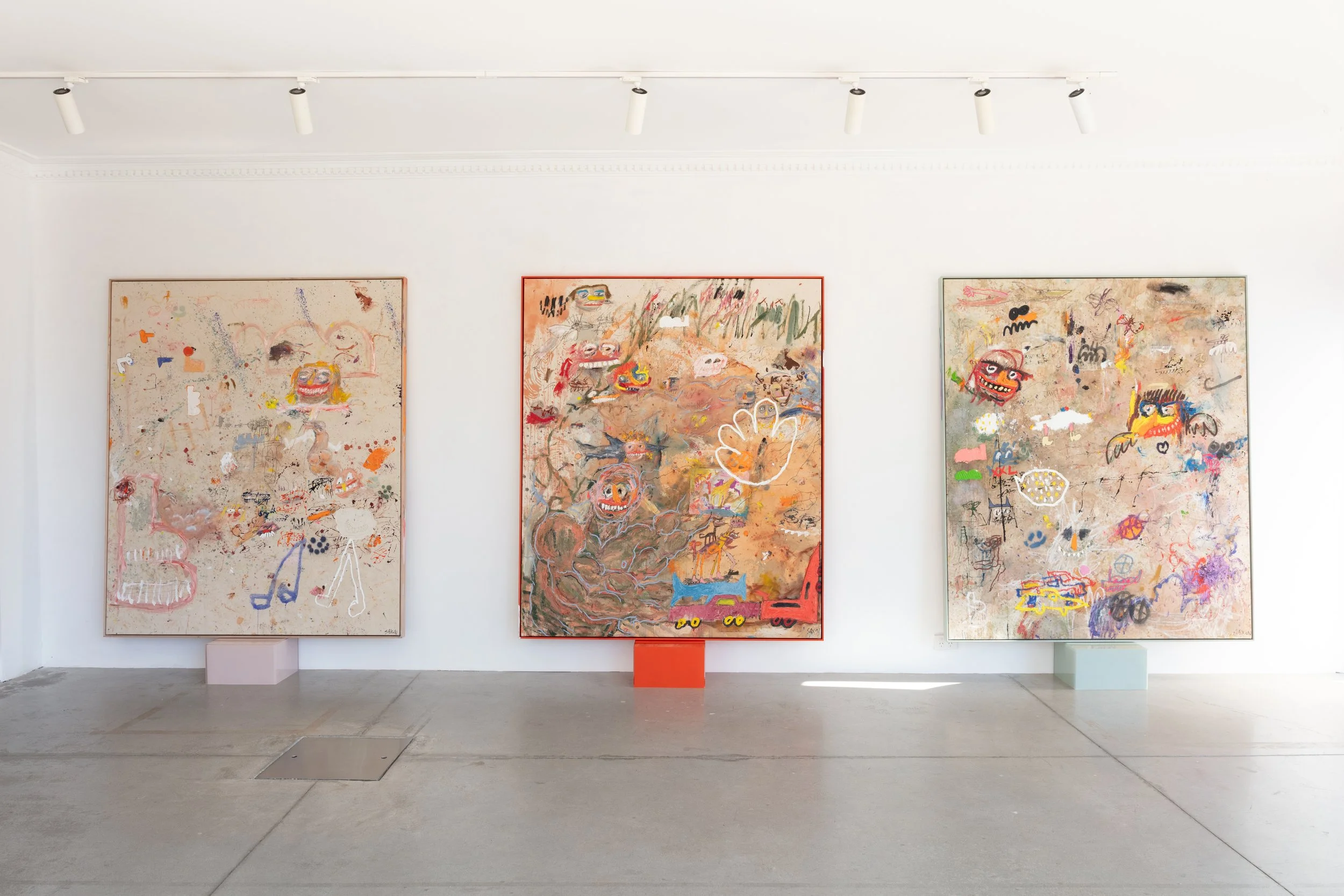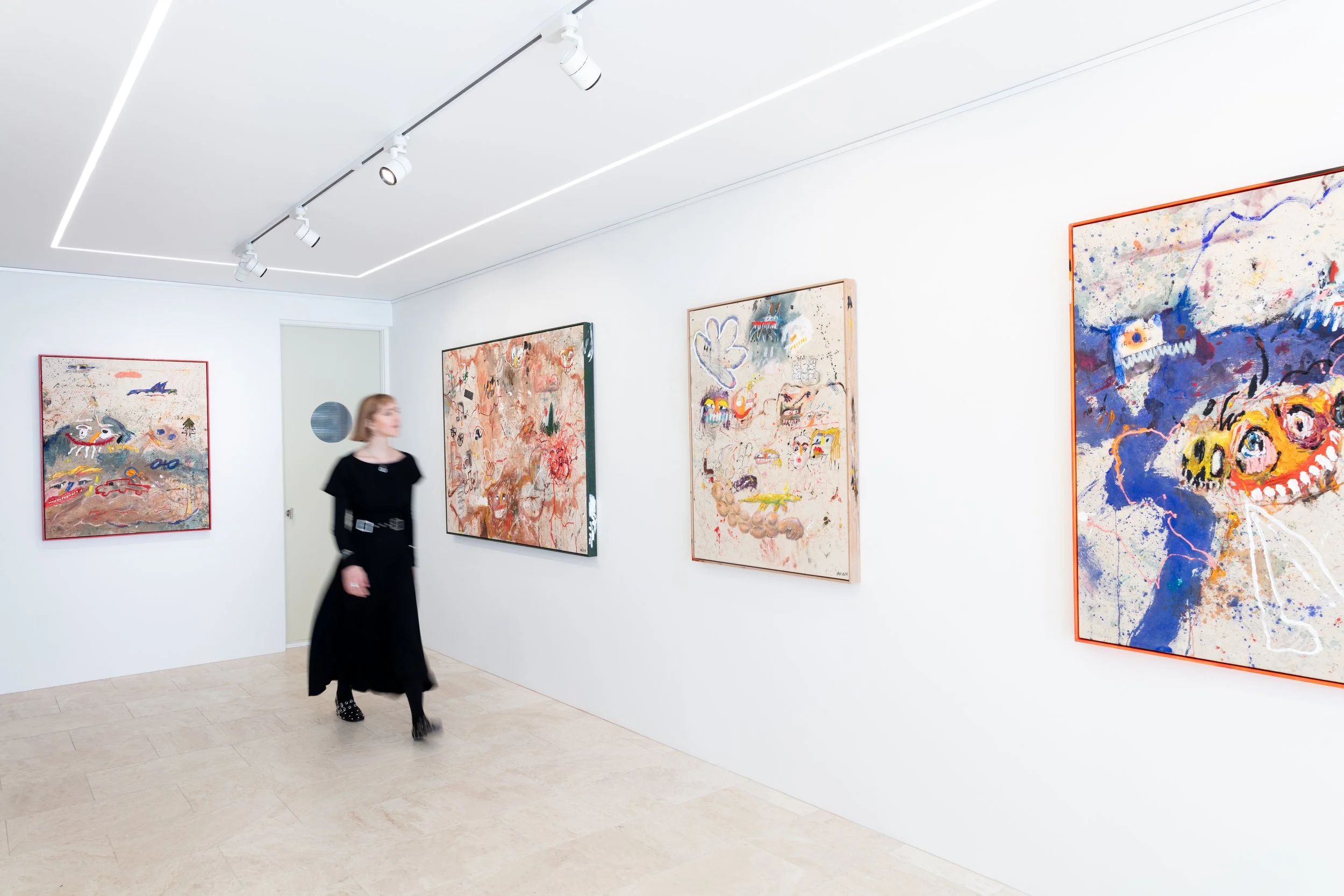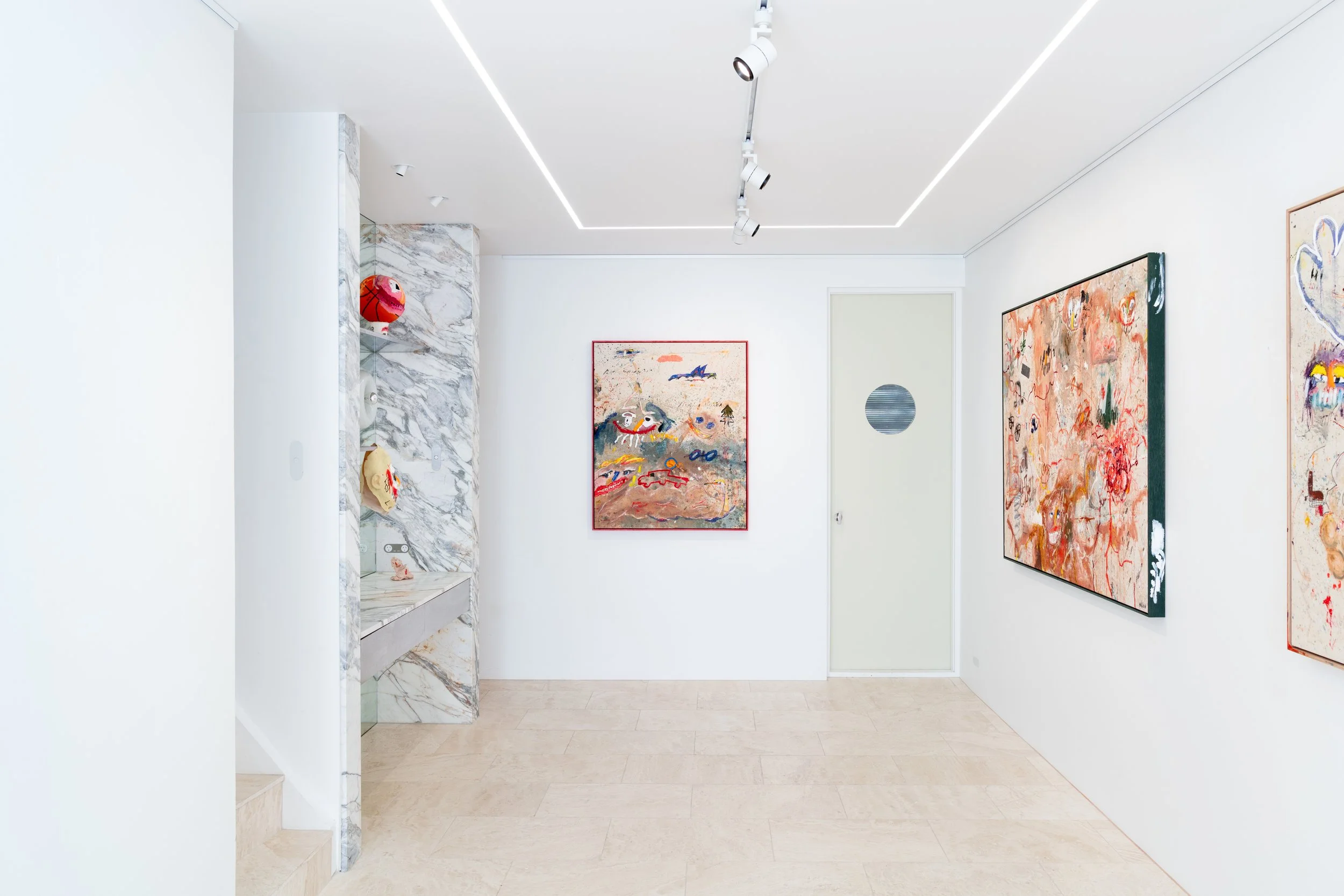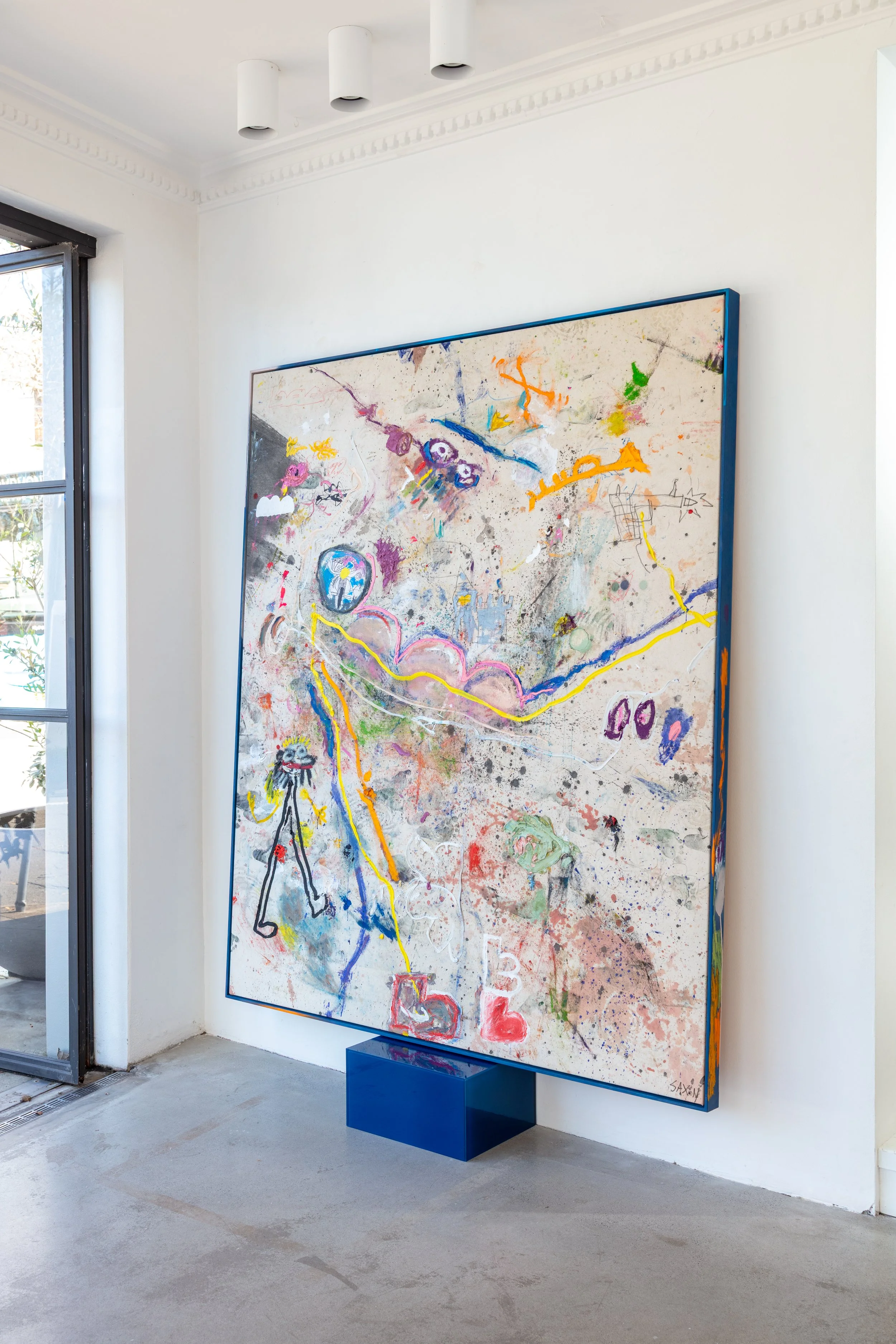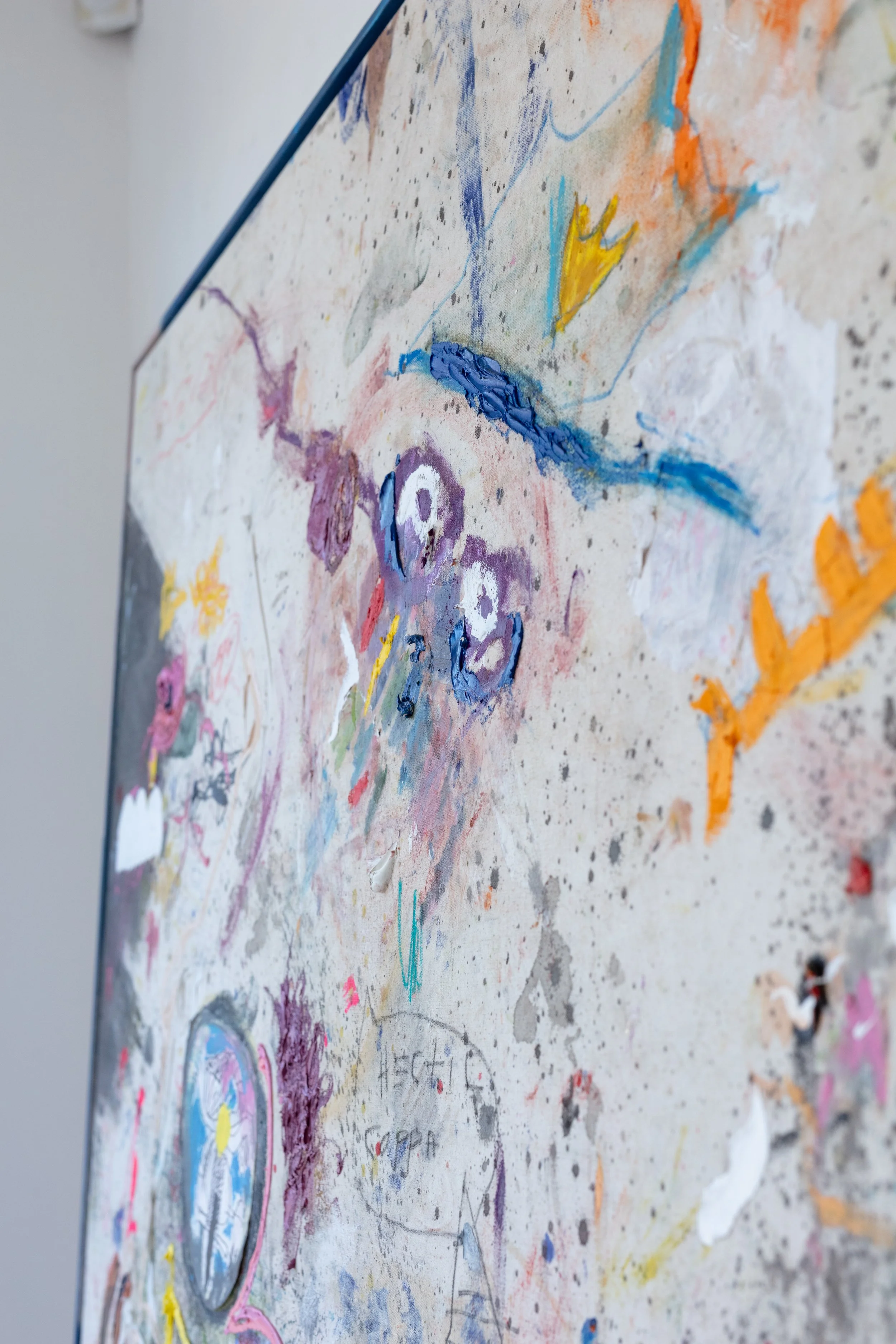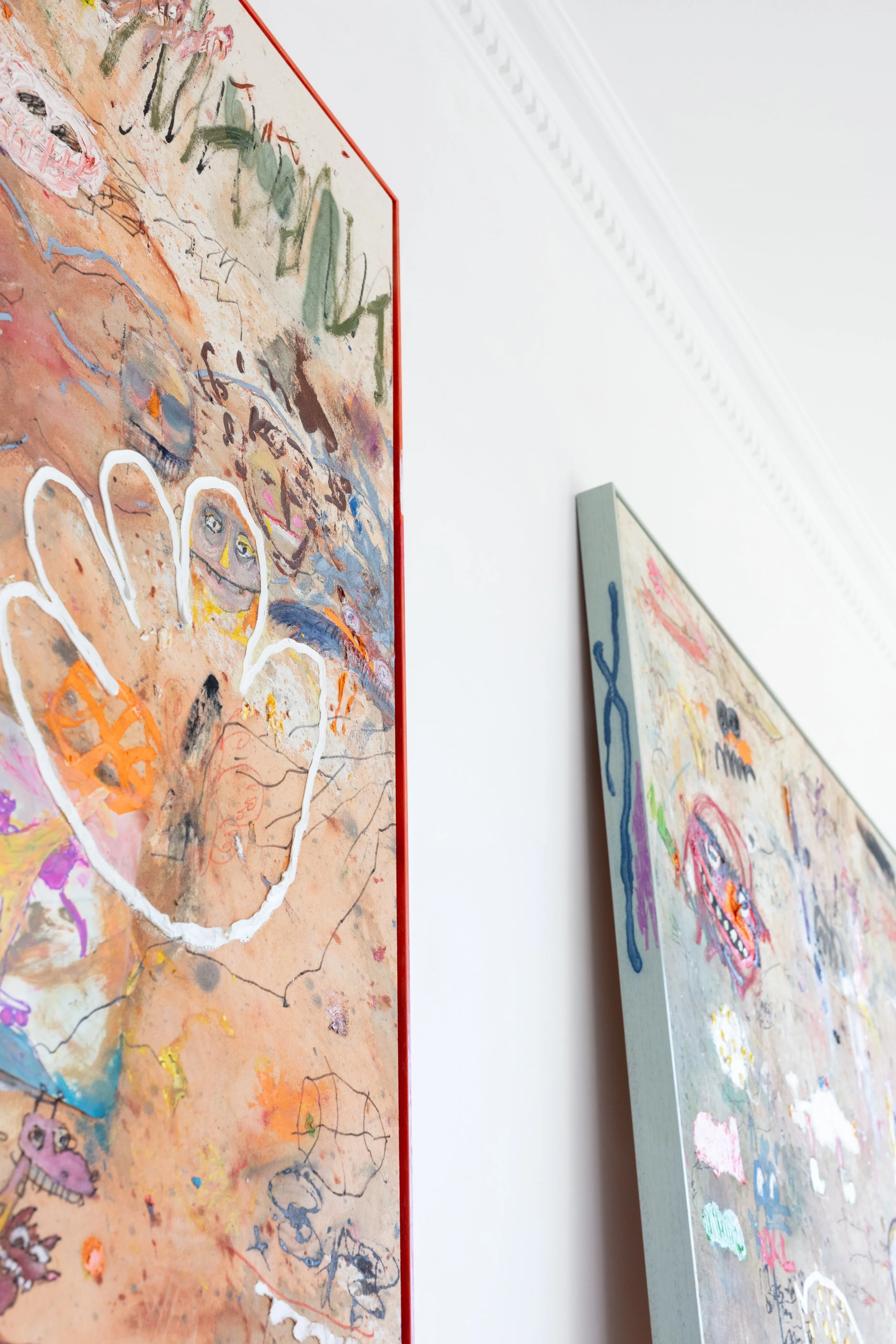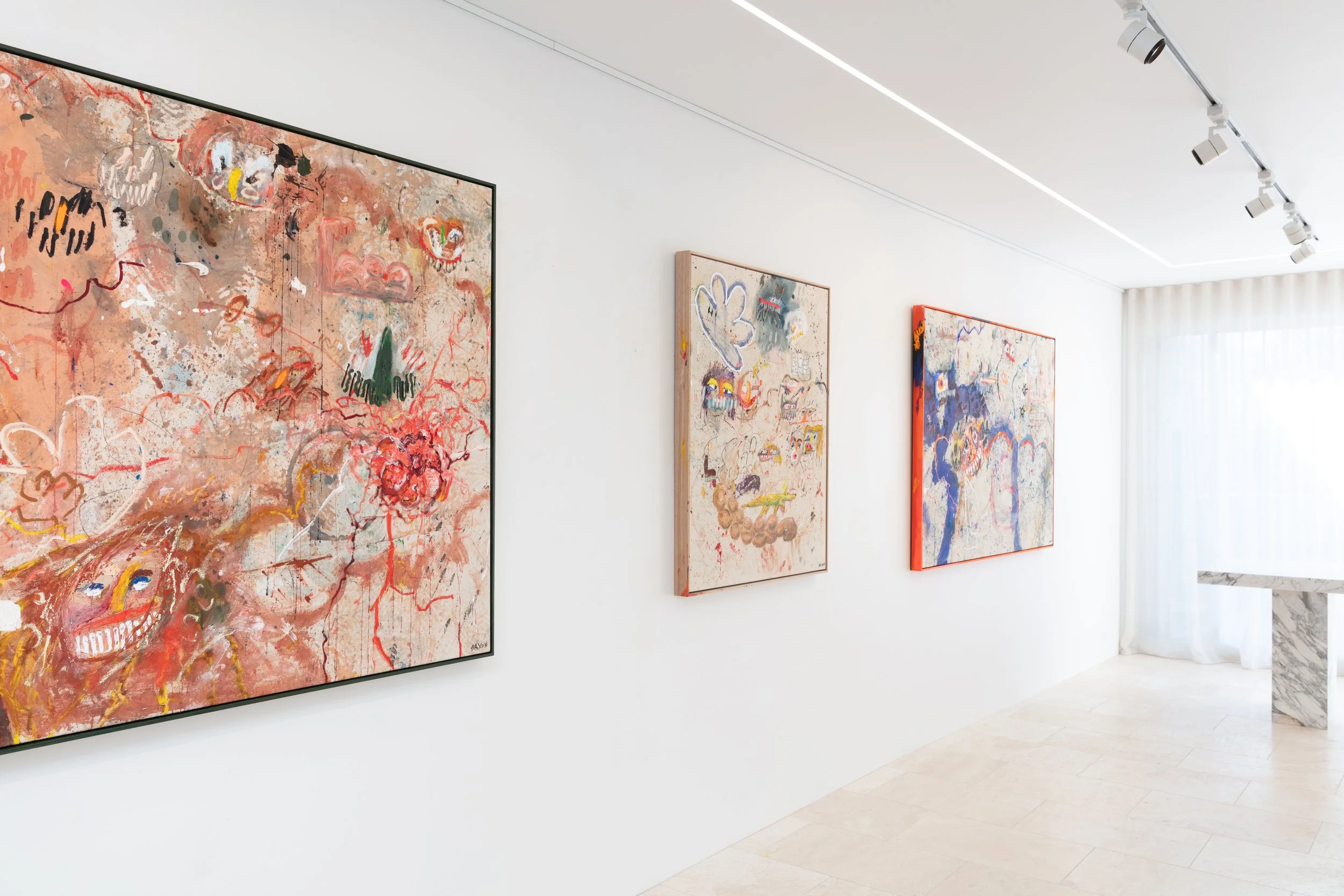
Gallery:
Saint Cloche Gallery
Exhibition:
13 - 31 August
Address:
37 MacDonald St, Paddington NSW 2021
Enquiries:
info@saintcloche.com
Saxon Quinn was working in his Northern Rivers studio one day, when a song called ‘Mirror Muscles’ came through the algorithm and out of his Bluetooth speaker. He was painting a series for an upcoming solo show at Saint Cloche Gallery in Sydney and had been listening to more punk stuff, enjoying the grittier sound and lyrical irreverence. This tune by Baby Dave (of Soft Play, formerly known as Slaves) struck a nerve. “I been working on my mirror muscles / See these puppies bursting out of my sleeves?” sings Baby Dave in the chorus. The song is both observational and satirical, and the lyrics were conceptually aligned with the paintings Quinn had been working on for his latest solo show, “No Mirror, No Likey”
Visually, the works are in part playful, grotesque and fun. They provide an earnest critique of the vanity and vapidity that are all around us in modern life: bulging muscles and maniacal faces are a recurring theme across the large-scale canvases, which are layered from oils, acrylics, inks, oil sticks, dirt, torn paper, acrylic markers and gesso. Some of the works include spray paint and glued pages from Quinn’s childhood sketchbooks. They’re more embellished, colourful and playful than his previous works.
Quinn says that ‘Mirror Muscles’—the song—“could not have matched the concept of the show more”. But he implicates himself within his critique of vanity too. When Quinn was 25, he dabbled with steroid pills and even injected stanozol a couple of times. He explains that in his teens and 20s, “Every time I would leave the house I would look at myself in every mirror as I left. No mirror was safe. How was the hair? Are the protein shakes working? Do I look like others or am I just a crappier copy?” To borrow a quote from Nick Cave, “mirrors became his torturers”.
Talking to Quinn, there’s a sincerity in the way he is grappling with the concepts in his works. While the paintings have elements of fun and playfulness, they aren’t a flippant artistic exercise: rather, his practice is a way of interrogating his ideas, his feelings and the past versions of himself. He says he’s outgrown a lot of those insecurities he once carried—in part with the help of his partner and through becoming a father—but these works are another part of the process. Over the past 12 months, Quinn has begun to show more of himself on the canvas, moving from abstract works with faint motifs to more personal reflections containing raw and direct references.
At its core, ‘No Mirror, No Likey’ is about insecurities – both the personal and universal. For Quinn, these insecurities were amplified through mirrors, which he interrogates via these huge, grotesque physiques. But he acknowledges that insecurity goes way beyond appearance, describing a time where it crept into everything he did – the way he viewed his self worth, his intelligence, his communication – and how it led to “a strange social anxiety where I would try to monitor and control every element of myself”.
“I feel like the last 12 months’ work has really helped settle some of the internal insecurities,” he explains. “Especially since diving a little deeper within myself. I’ve definitely outgrown a number of them but there’s still an entire basket to unload.”
NO MIRROR TEE
Quinn’s paintings are deeply layered and the layering process is cyclic: each time he begins painting a new body of work, he rolls canvas out on the floor of his Murwillumbah studio as a dropsheet. As the roll catches the drips and flecks from the works-in-progress above, along with dirt and the waffle pattern from the soles of his shoes, the layers start to build passively, linking each body of work to the last. From there, he cuts the floor-marked sheet into individual canvases, staples them to the wall and begins the process of making them into paintings. Quinn cites by Cy Twombly, Karel Appel and the CoBrA art movement as big influences, along with the inevitable modelling from his mother, the Australian painter and sculpture artist Dianne Coulter. Music is a big one too, along with the millennial cartoon imagery from his childhood: Biker Mice From Mars, Street Sharks and He-Man. Notable to this particular show is the observation that these ‘90s cartoon characters all had big muscles.
“They were all jacked,” says Quinn. “Very bulky figures. So all my [childhood] drawings would be like that. It was implanted in the head…”
For Quinn though, the mirror muscles ultimately didn’t serve their purpose. They were an attempt to stand out and also to disappear. He says he was “hoping to fit in, to be loved [and] liked through appearance and attitude only to realise that in many cases it was a repellent.”
He says it’s funny looking back now and thinking about this version of himself. When he looks back, which is ultimately what he’s doing through this series of paintings, he’s asking: “why was I so hard on myself?”
Nat Kassel – July 2025


